Last Updated on April 3, 2024
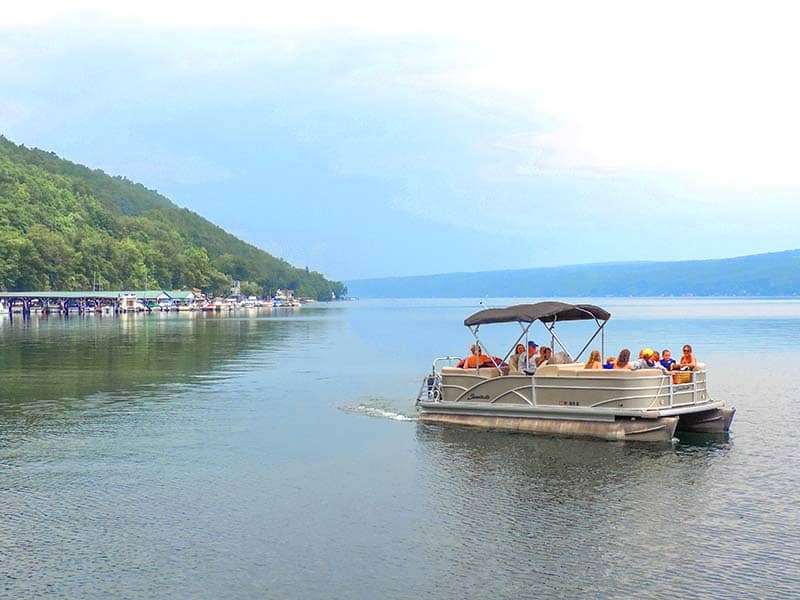
Estimated reading time: 15 minutes
By Jim Ferri
I was becoming absorbed in the minutia of things around me as I passed through so many little towns when I realized this was one of the things to do in the Finger Lakes.
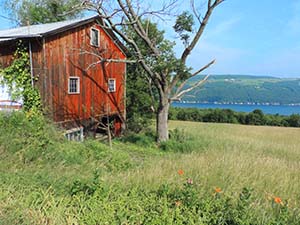
The Finger Lakes are a group of eleven narrow and long lakes, roughly north to south, directly south of Lake Ontario. In New York, the area is called the Finger Lakes Region.
The day I was on my road trip through the region, my ribbon of road slowly rose and dipped with the hills I was crossing. The road was almost arrow-straight, cutting across swatches of fields and forest, past little farm buildings and neat little houses. Signposts along the way pointed me to Leicester, Avon, and Warsaw, all hinting at the origins of early settlers in the region.
For someone so accustomed to urban life in America, as those early settlers who were so accustomed to life in Europe must have felt, it was a wonderful new world.
Absorbed By the Minutia
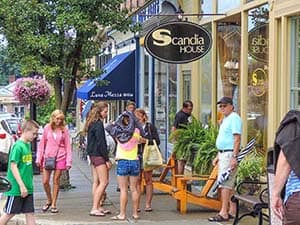
I soon began to be absorbed by the minutia I was passing—a Little League diamond tucked away on the outskirts of one town, fallow fields bursting with wildflowers in another, building fronts draped in bunting here, a sign for a dentist hanging out by the street over there—each a little piece of the Finger Lakes jigsaw slowly forming around me.
Buffering the southern end of picturesque Keuka and Seneca Lakes in upstate New York, the area is a pretty pocket of rural America. But my problem was that I needed to schedule more days there. That was impossible, so I needed to use my time well.
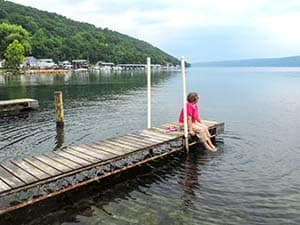
My first stop was the town of Corning, and I was determined to make the most of it.
Arriving in Corning, I found an iconic town filled with centuries-old red brick buildings surrounded by wooded hills. Many of the buildings had been lovingly restored, and a walk about it is a step back into 19th-century America.
However, I was less interested in walking about town than in seeing the city’s two famous museums. After a quick stop at my hotel for a luggage drop, I was off to them.
Table of contents
- Absorbed By the Minutia
- The Top Thing to Do in the Finger Lakes – See the Incredible Corning Museum of Glass
- The Other Renown Corning Museum
- The Fascinating Glenn H. Curtiss Museum
- Finger Lakes Boating Museum
- Hammondsport’s Black Sheep Inn
- The Finger Lakes Watkins Glen State Park
- Lunch at a Winery, a Stop at a Distillery
- The National Soaring Museum in the Finger Lakes
- On to Mark Twain Country
- The Arnot Museum in Elmira
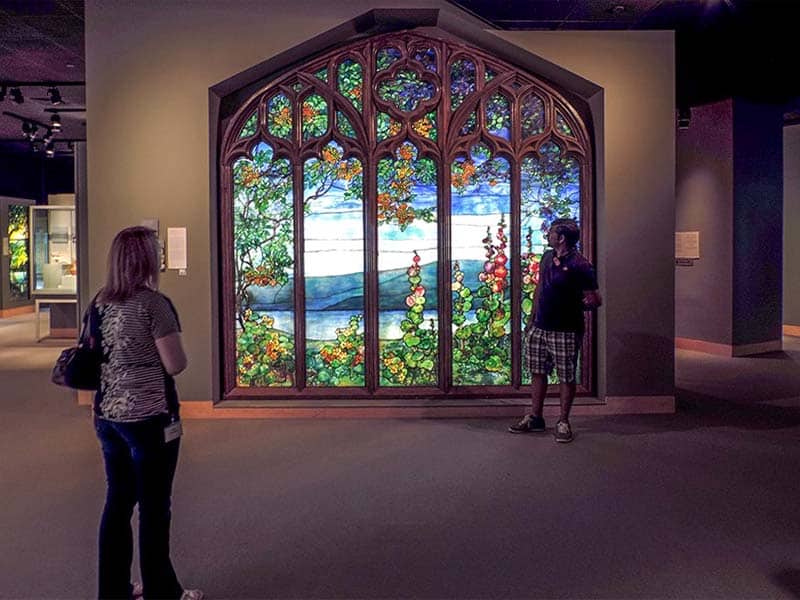
The Top Thing to Do in the Finger Lakes – See the Incredible Corning Museum of Glass
The first museum on my list was the Corning Museum of Glass, the world’s largest glass museum. It contains 45,000 glass objects spanning 35 centuries, including the glass portrait of an ancient Egyptian pharaoh. It also has some of the most beautiful things you’ll see in any museum, anywhere. Simply put, it is the place to learn about glassmaking.
The museum’s tickets are timed and range between $16 and $30, depending on the discounts provided.
The Corning facility has a 500-seat Amphitheater Hot Shop for daily live glass demos and design sessions. The glassblowing shows are very interesting; occasionally, a few lucky visitors will be given one of the pieces created. They usually range from a small decorative piece to a vase or pitcher.
Corning also offers many glassmaking experiences. For an additional fee (mainly in the $20–$36 range), you can join the “Make Your Own Glass” experience. You can make any of a variety of glass pieces (I made a glass flower) with the help of an experienced glassworker. You can take your pieces or have them shipped to your home. It also has an extensive museum shop.
Corning Museum: 1 Museum Way, Corning, NY / (800) 732-6845 / www.cmog.org / open 9 am–5 pm daily. From Memorial Day weekend to Labor Day, it is open until 7 pm. Adult admission is $22; a 15% discount is available for college, military, AAA, or 62+; and admission is free for 17 years and younger.
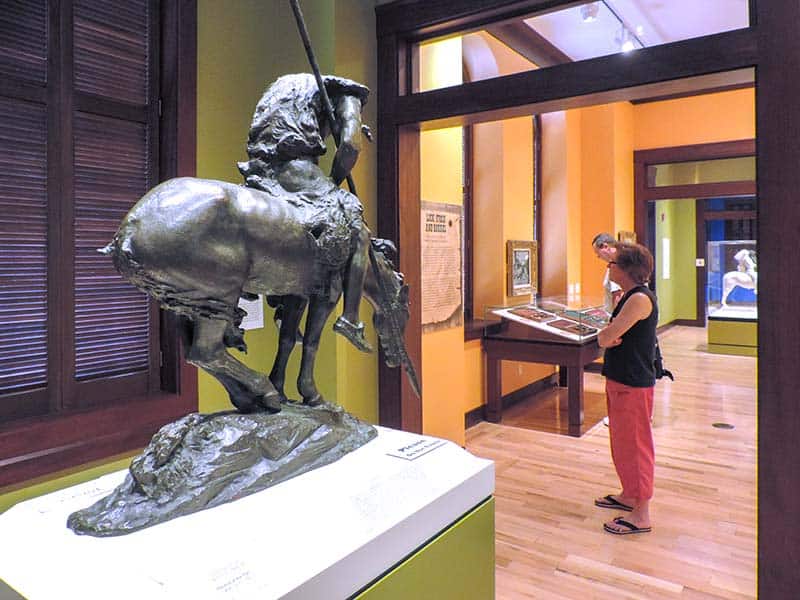
The Other Renown Corning Museum
The other renowned institution in Corning is the Rockwell Museum, an affiliate of the Smithsonian. Admission is included in your ticket for the Corning Museum of Glass, and there’s a shuttle bus between the museums. The bus runs continuously throughout the day, all year.
The Rockwell had previously been known as the Rockwell Museum of Western Art. Its renaming identified it as a collection of American art, not solely Western art. It’s a collection of American paintings, drawings, sculptures, and photographs “painting a transformational view of the American experience.”
The Rockwell is a beautiful, manageable, and enjoyable small museum that portrays the American experience through art. The Smithsonian also loans the museum special exhibitions.
During my visit, I found a beautiful exhibit of Native American contemporary pottery. The exhibit had interactive touch screens that let one delve deeper into the history and artistry of the pieces.
The Rockwell is located in Corning’s old 1893 City Hall, encompassing the old city offices, firehouse, and police station. When you enter the museum shop, look to your left, and you can see the hole in the ceiling where the fireman’s pole originally stood.
Rockwell Museum: 111 Cedar St., Corning, NY 14830 / Tel: (607) 937-5386 / https://rockwellmuseum.org / Open Thursday – Monday, 9 am – 5 pm. Closed on Tuesdays and Wednesdays / Admission: $6 – 12; additional discounts given.
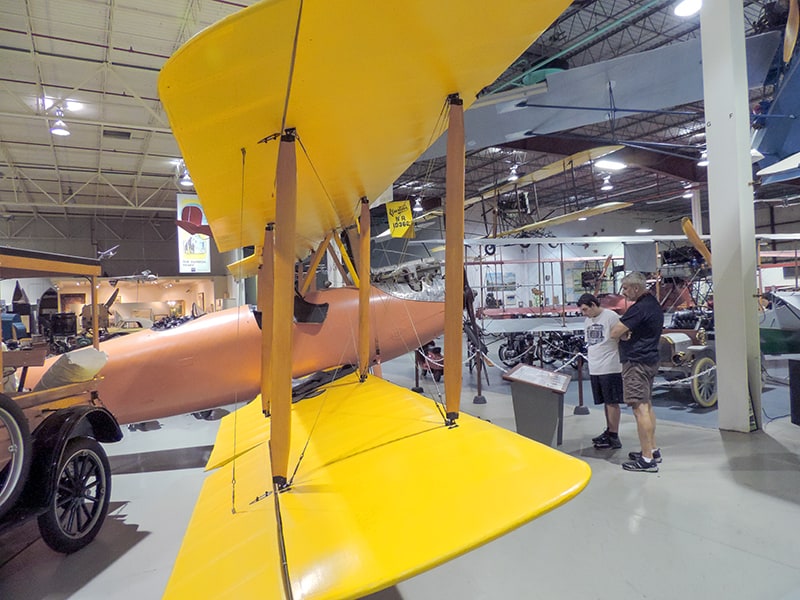
The Fascinating Glenn H. Curtiss Museum
One of Hammondsport’s most popular attractions is the Glenn H. Curtiss Museum, dedicated to the town’s favorite son. Curtiss is the “architect of American aviation,” and the museum is fascinating.
As you’d expect, the museum takes you back in time. But it also opens your eyes to the incredible problems that had to be overcome in developing the airplane before and throughout World War I.
Curtiss also invented the world’s first seaplane. Before becoming involved in aviation, he was a young cyclist. He was also a mechanic who invented the motorcycle.
While the museum shows many things related to his life and inventions, it also shows all sorts of things associated with the local Hammondsport area. As the museum director told me, “We’re selling nostalgia.” As I told him, “You do it exceptionally well.”
Glenn H. Curtiss Museum: 8419 State Route 54, Hammondsport, NY 14840 / (607) 569-2160 / https://glennhcurtissmuseum.org / May 1 – October 31: 9 am–5 pm daily; November 1 – April 30: 10 a.m.–4 pm daily
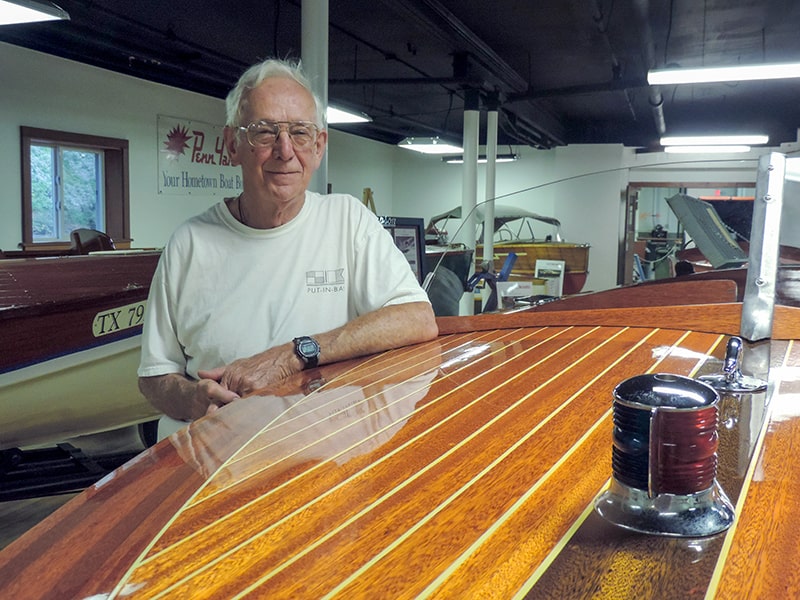
Finger Lakes Boating Museum
Later that day, I visited the Finger Lakes Boating Museum. It’s a small museum which preserves the history of boating and boat building in the Finger Lakes. The museum has a collection of 115 boats built in the Finger Lakes region over the past 100 years.
But what I found most interesting was the hands-on class on boat restoration. In its active workshops, volunteers, including teenagers, repair, refurbish, build, and rebuild boats. The museum also operates a tour boat on Keuka Lake (departs from Depot Park) during the summer and fall seasons. If boats are one of your inerests, it’s worth a stop.
Finger Lakes Boating Museum: 8231 Pleasant Valley Road, Hammondsport, NY 14840 / (607) 569-2222 / https://www.flbm.org /open every day December 4 – March 31, 10 am–4 pm; April 1–December 3, 10 am – 5 pm
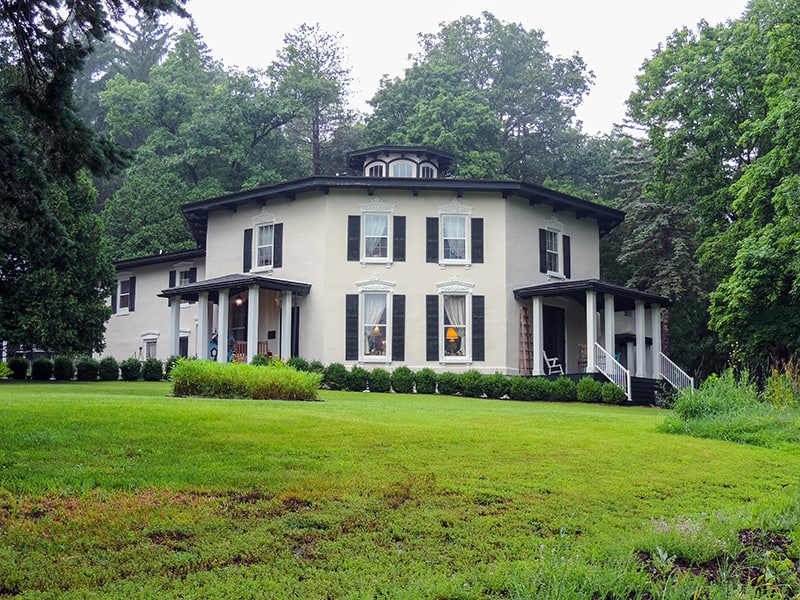
Hammondsport’s Black Sheep Inn
Most of the towns in the Finger Lakes are quiet little towns where everyone seems laid back. And that’s its charm. No one here is in a rush to do anything.
I experienced that charm one morning at Hammondsport’s Black Sheep Inn. Inadvertently, I locked my bathroom door and could not get into the shower. The lock was an old-style, complicated thing, and it took a good part of an hour before the inn owners could open it so I could get ready for the day.
It was a bit embarrassing, of course. But it was something I forgot when I sniffed the aromas wafting out of the kitchen into the cozy dining room. Then, over a delicious Tex-Mex Breakfast Crock Soufflé, I chatted with the innkeepers about the five-room octagonal house. It’s a beautiful, unique place, built in 1859 and listed on the National Register of Historic Places.
After our breakfast chat, I set off for Watkins Glen, the town that anchors the southern end of Seneca Lake. It was an easy journey from the inn in Hammondsport to Seneca.
The rolling hillsides reminded me of drawings in a child’s storybook. As I climbed each hill, I saw one lake in my mirror and another out front. The bucolic setting of farms and forests enveloped me all the way to Watkins Glen.
Black Sheep Inn: 8329 Pleasant Valley Rd, Hammondsport, NY 14840 / (607) 569-3767 / https://www.stayblacksheepinn.com/
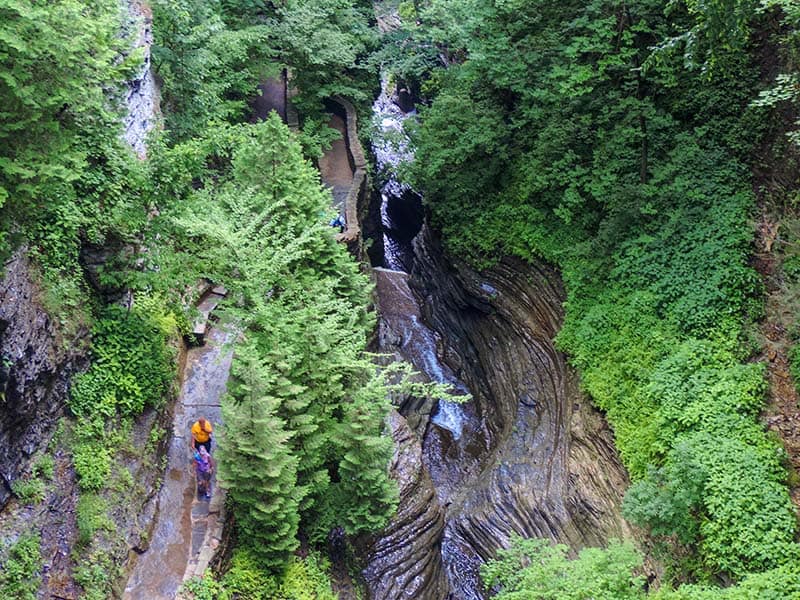
The Finger Lakes Watkins Glen State Park
Watkins Glen is a state park in the Finger Lakes region. Many people know it only for its Grand Prix, held every September. In racing circles, people know it simply as “The Glen.”
I only had a little free time since I was going for a driving experience at the Watkins Glen International track, but I still wanted to at least see part of the park. I found it a beautiful place, perfect for a leisurely amble. Its gorge walk weaves between 200-foot cliffs, taking you over and under 19 waterfalls.
After an hour, I returned to my car to head to the racetrack. I had a “Drive the Glen!” ticket and was excited about driving on the famous track. The fee is $30 per vehicle, payable online or at Gate 2, directly off County Route 16. Unfortunately, however, it turned out not to be what I expected.
I assumed I would be riding in a racecar, as I had done in Homestead, FL, some five years earlier. But instead, I found I would be driving my car for several laps around the track behind a pace car.
I was disappointed since I thought it would waste my time. But once on the track, I realized that despite the lack of speed, it provided a good sense of racecar driving.
Even though I was driving at about half the speed of professional drivers, I discovered how difficult it was to navigate the track’s twists and turns. It gave me a new appreciation for the skill set needed by professional drivers on the circuit.
Watkins Glen: 1009 N Franklin St., Watkins Glen, NY 14891 / (607) 535-4511 / https://parks.ny.gov/parks/watkinsglen/; vehicle use fee: $6-10
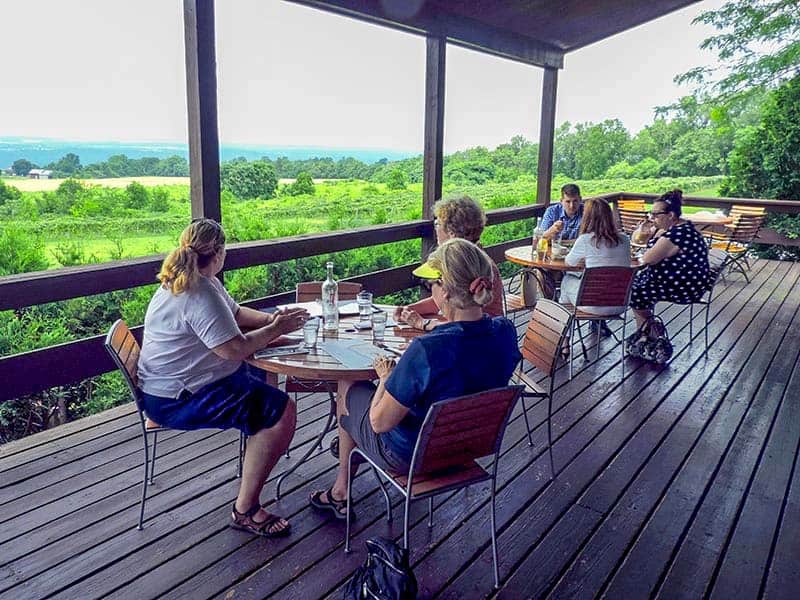
Lunch at a Winery, a Stop at a Distillery
I spent my afternoon driving about the eastern shore of the lake. Occasionally, I’d see a diamond-shaped sign with a horse and buggy on it. These signs warned about Mennonite and Amish farmers who still travel the roads in their buggies.
I visited a few of the area’s incredible vineyards and boutique wineries. Later, I stopped for lunch at the Red Newt Cellars Winery and Bistro for a delicious lunch. I dined, looking out over the vineyards that flowed to the lake.
Although the area has the largest number of vineyards in the state, it isn’t all wineries. I also made it a point to stop at the Finger Lakes Distilling Company. This craft distillery uses locally sourced grains and other products and distills them all using the traditional method.
Luckily, I was able to chat with its owner, Brian McKenzie. He explained all about distilling various grains to make different kinds of whiskey and other products. I sampled a delicious Irish-style “pot whiskey,” which is so named because it cannot be called “Irish” since it’s distilled in America.
Red Newt Cellars Winery: 3675 Tichenor Rd, Hector, NY 14841 / (607) 546-4100 / https://www.rednewt.com / Tasting & Sales Daily: 12 – 5 pm; last seated flights: 4 pm Finger Lakes Distilling Company: 4676 NY-414, Burdett, NY 14818 / (607) 546-5510 / https://fingerlakesdistilling.com/ / Tastings 11 am-4 pm daily; Friday and Saturday 10 am-5 pm
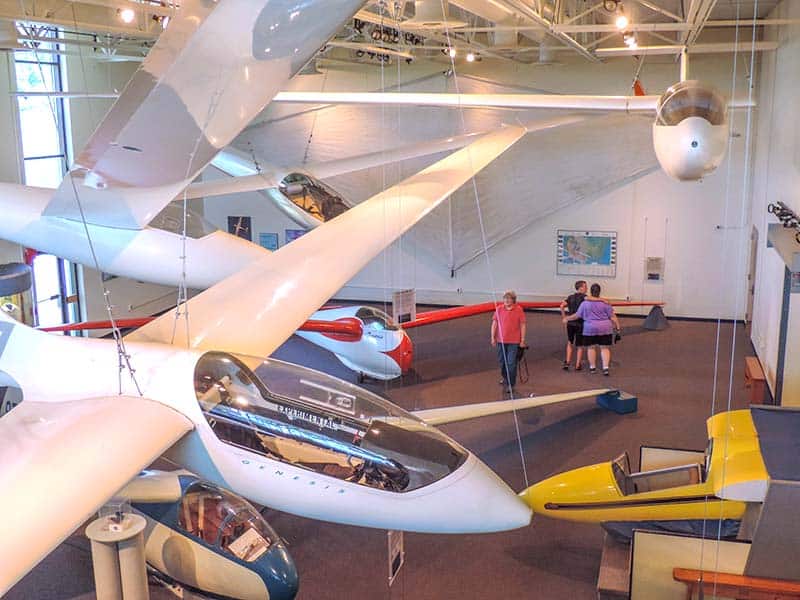
The National Soaring Museum in the Finger Lakes
Early the following day, I went to Harris Hill, home to the National Soaring Museum, where I would take a glider ride. I was glad I had scheduled myself to go in the morning since afternoon thunderstorms had been rolling through the area for some days.
I was dismayed to learn, however, that it was too windy to launch a glider despite the clear skies. The wind was gusting at 20–30 mph. Nevertheless, I made good use of my time by visiting the adjacent National Soaring Museum, which contains dozens of gliders—some historic, some sporty—but all beautiful in their unique designs.
The ugly duckling of the collection was a troop-carrying glider from World War II that looked more like a large shoebox with wings. Climb inside the clumsy-looking glider, and you’ll experience what the D-Day troops had to endure and see just how flimsy the craft was.
National Soaring Museum: 51 Soaring Hill Dr., Elmira, NY 14903 / (607) 734-3128 / https://www.soaringmuseum.org/ / May 1–October 31: 10 a.m.–5 pm; November 1-April 30: 10 a.m.–4 pm.
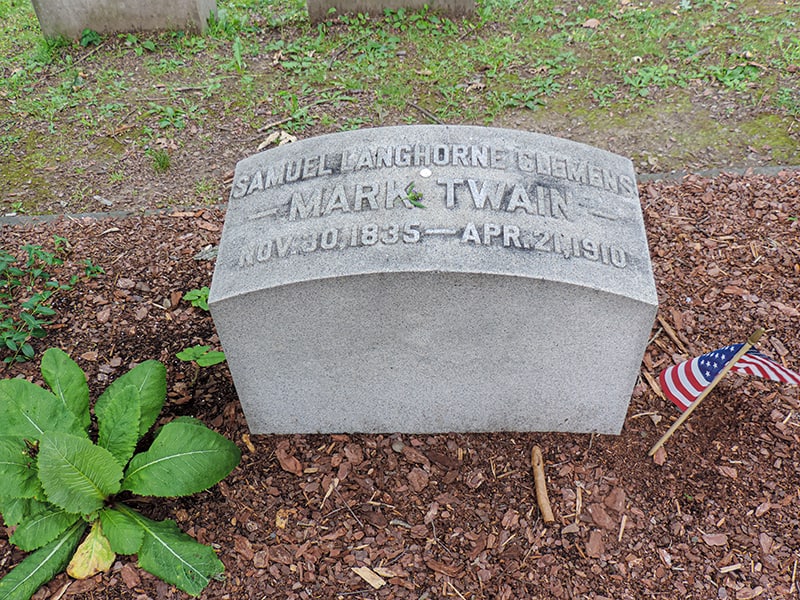
On to Mark Twain Country
Leaving the Soaring Museum, I continued to Elmira College, about a 20-minute drive away, to visit its Center for Mark Twain Studies and view the small woodland study where Twain penned many of his most famous works. The study was transported to the college from nearby Quarry Farm, where Twain and his family spent most of their summers.
If you’ve ever read Twain’s works or would like to learn more about the man William Faulkner praised as “the first truly American writer,” it’s a stop worth making if you’re in the area.
Twain’s grave is in the nearby Woodlawn Cemetery. (To learn more about Twain’s life in the Elmira area, see Into Mark Twain Country in Upstate New York.)
Elmira College: 1 Park Pl., Elmira, NY 14901 / (607) 735-1800 / https://www.elmira.edu/welcome-to-elmira/center-for-mark-twain-studies
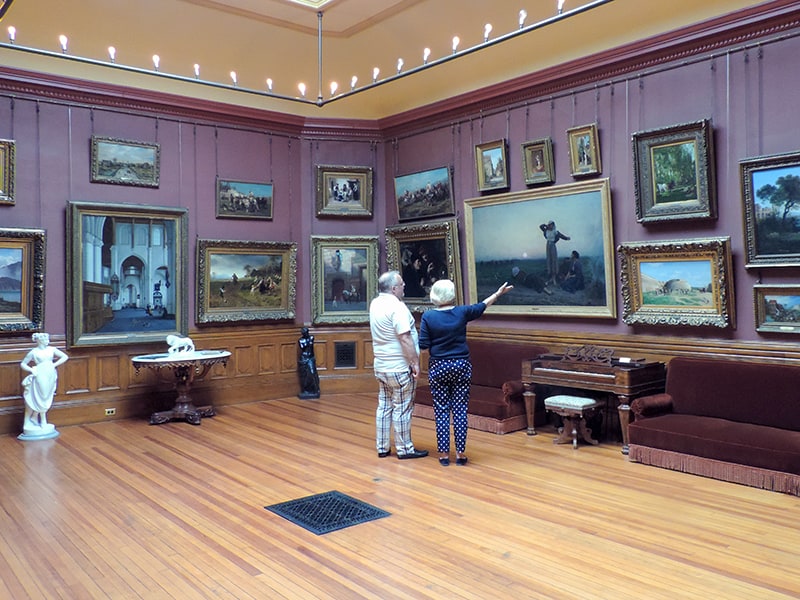
The Arnot Museum in Elmira
If you visit Elmira, plan to spend time at the well-regarded Arnot Art Museum. It’s a stunning small art museum, the type you only stumble upon occasionally.
This museum is special because it houses the collection of the affluent Arnot family in their 1833 neoclassical mansion, some of which were originally displayed. The collection contains 17th—to 19th-century European paintings, 19th—and 20th-century American art, and a small collection of Asian and Egyptian artifacts.
Its collection is so stunning that it was described by one publication as “arguably the best small-town art museum in America.” You may well agree.
Arnot Art Museum: 235 Lake Street in Elmira, New York / (607) 734-3697 / https://www.arnotartmuseum.org / Tuesday – Friday: 10 am-5 pm; Saturday: 12noon-5 pm; closed Sunday and Monday / $7 adult; %$ 55+; other discounts available
You may also enjoy: 10 Really Interesting American Small Museums / Literary Landmarks: Inside the Homes of Famous Writers / A Winter Weekend Getaway to Vermont
If You Go:
Steuben County Conference & Visitors Bureau
1 West Market Street
Corning, NY 14830
Tel: (607) 936-6544
http://www.corningfingerlakes.com/

The Finger Lakes make a spectacular vista in the fall ….
Although a great article, Corning NY is not a village or town? it is the City of Corning aka The Crystal City.
Hi John,
You’re absolutely right — it’s the City of Corning. I tend to use the word town rather loosely when I write. Then again, didn’t Sinatra call Chicago “my kind of town”? For any who haven’t been to Corning, it’s well worth a trip.
I liked your article wished you had spent more time in geneva my hometown . The finger lakes does not include warsaw it is western ny!
That’s a good point Anne and I see what you mean, although I was referring to the original home towns of the immigrants.
Very nice write up. I lived 25 years in Corning/Painted Post. I now call Canandaigua home since ‘99
I’m glad you enjoyed it Patrick. Thanks for the kind words.
Jim, next time come through Senecas County and visit Sampson Veterans Memorial Cemetery in Romulas, Waterloo the Birth Place of Memorial day. We have a long history of military bases and service to our Country and Veterans.
Thanks for the info Jack. I’m a Vet myself. I’m going to pass this on to some friends in upstate NY.
All reasons why I have lived in Geneva all my life. Nothing lacking except traffic, tornados, hurricanes
, earthquakes and high crime rate.
Heaven on earth
Lived in Corning and on Keuka lake my whole life. I now live in SC, it’s great to read and relive my old stomping ground!
This is a wonderful article describing a “diamond in the rough” that residents call western New York.
Not to mention all the other beautiful “Finger” lakes and noteworthy places of interest
Yes, Nancy, the entire area is beautiful. I wish I could have stayed for a few weeks. It’s a beautiful part of the northeast US.